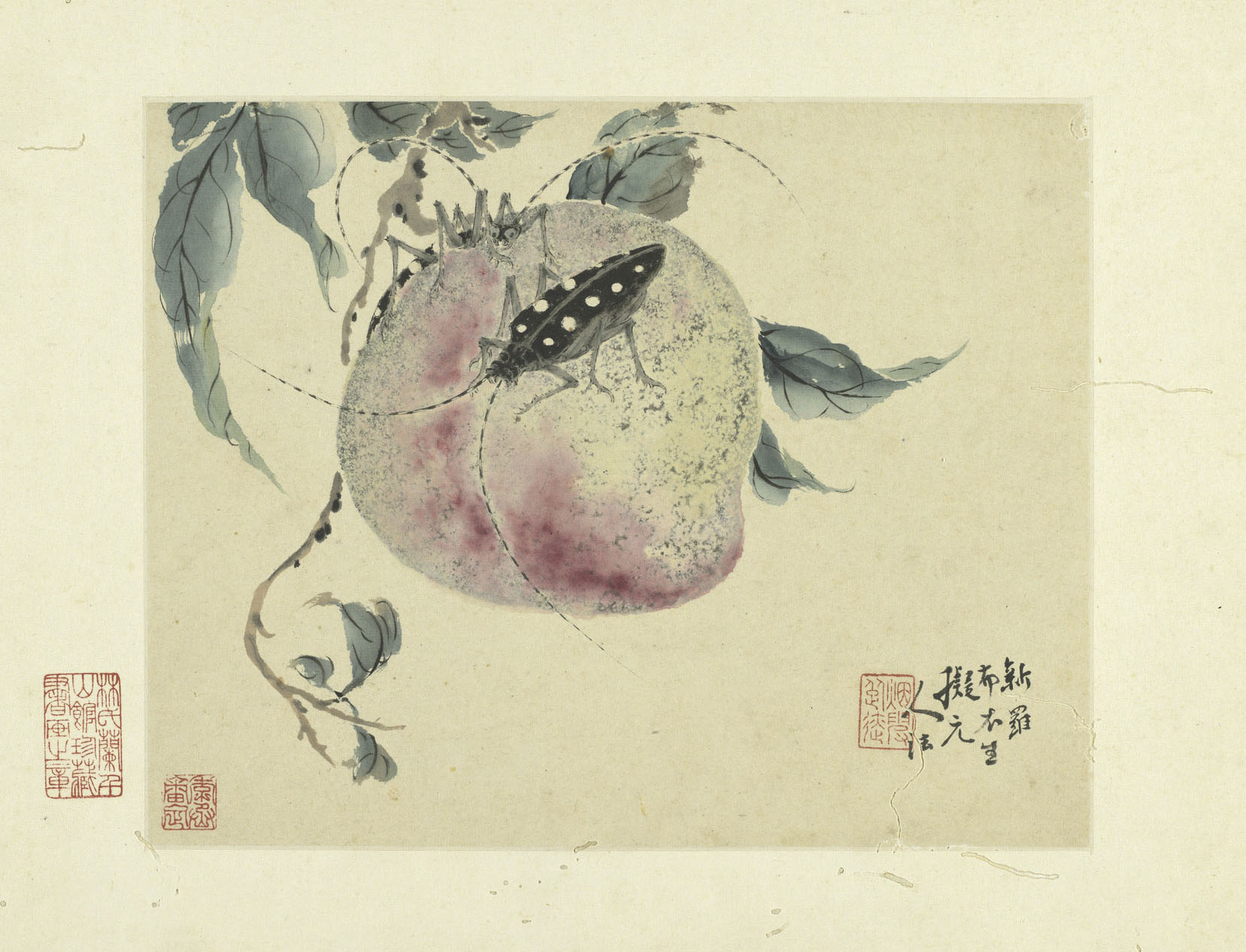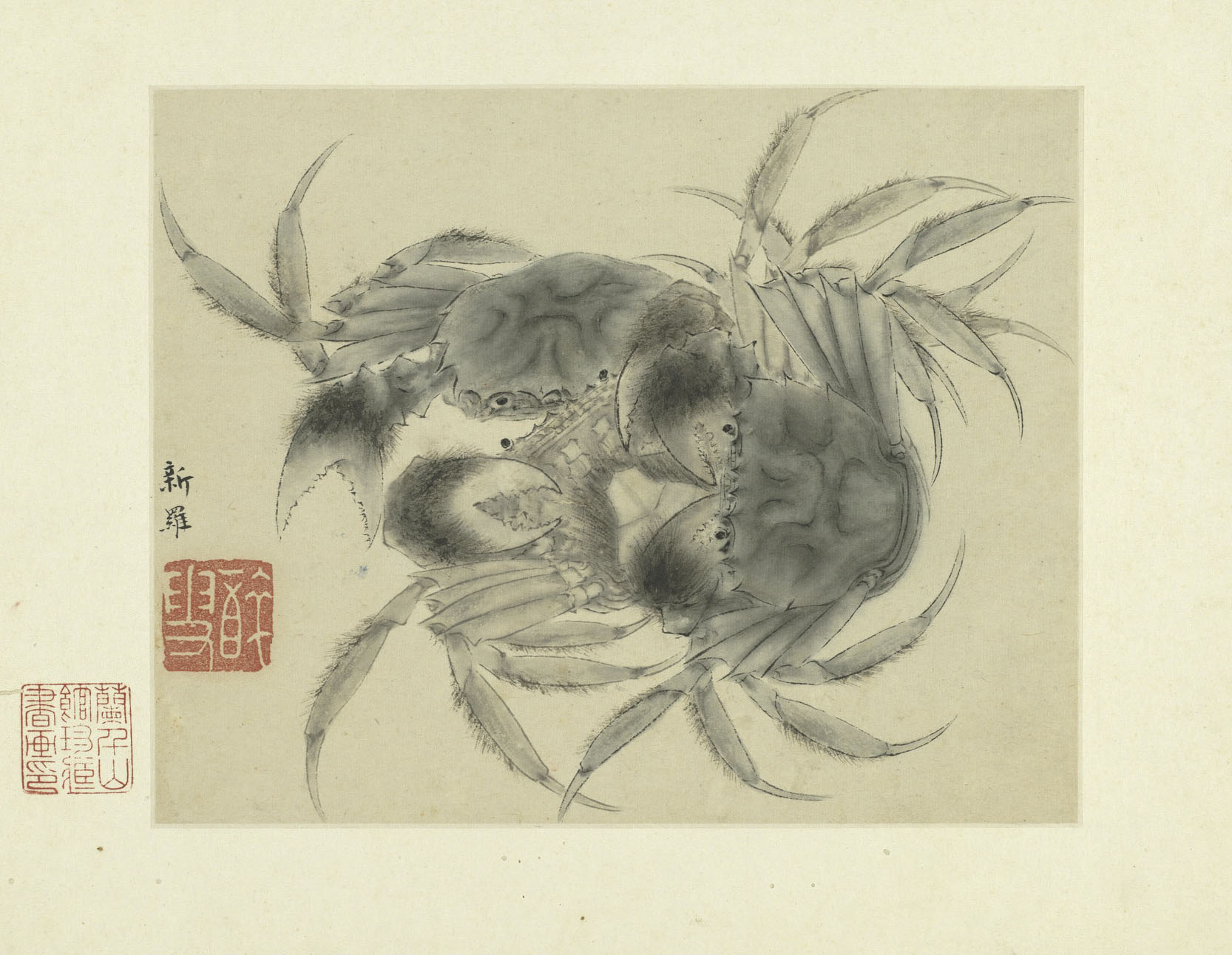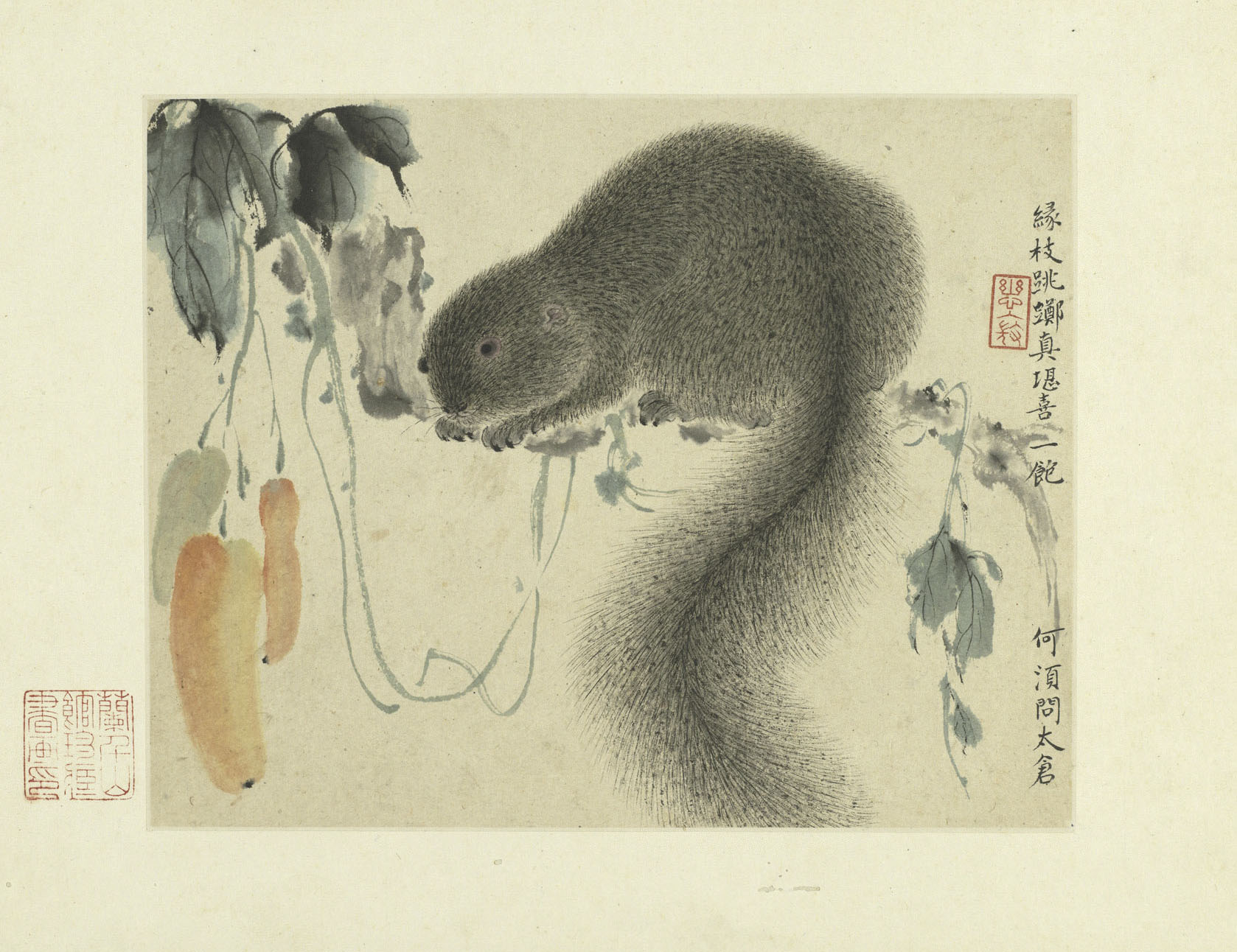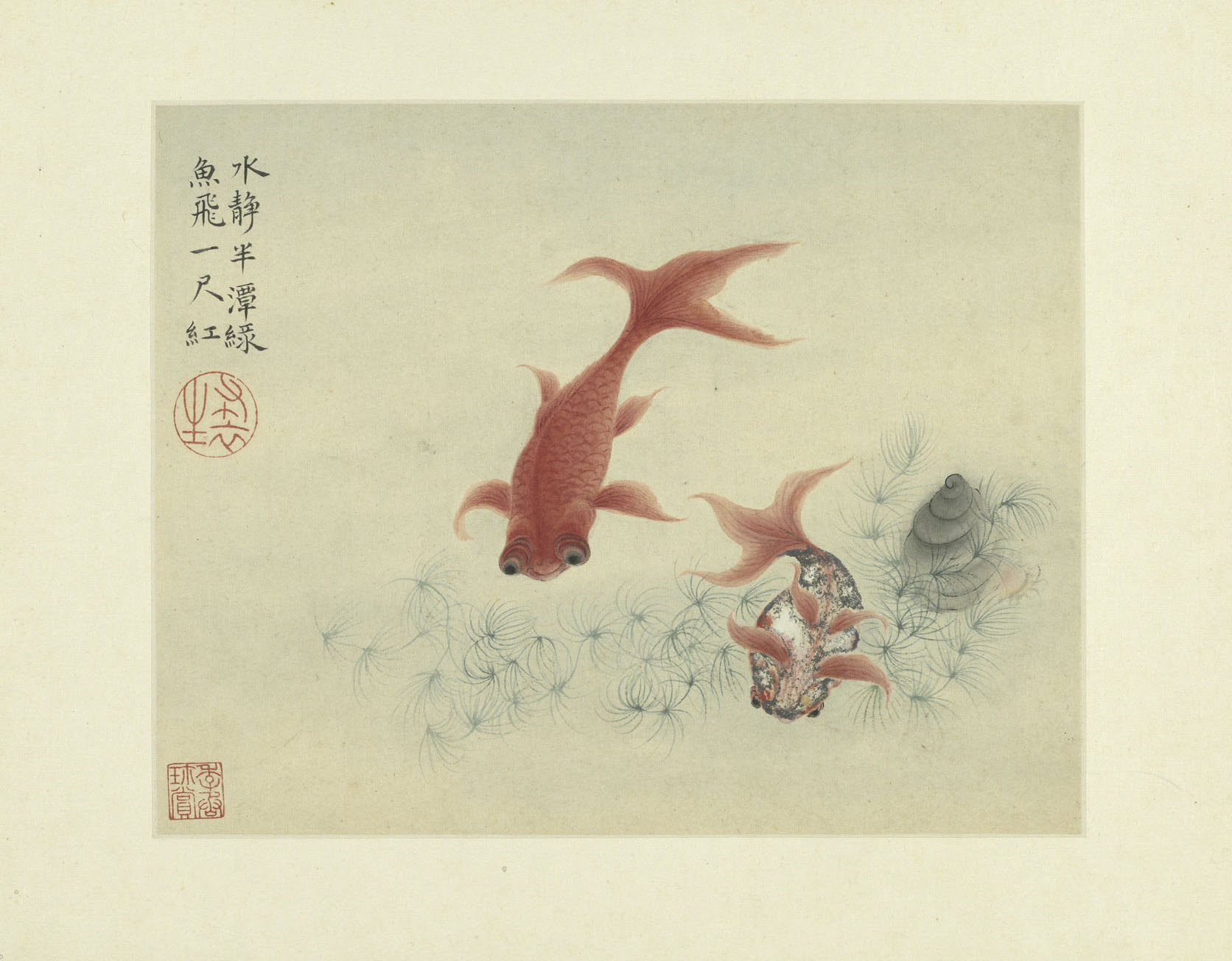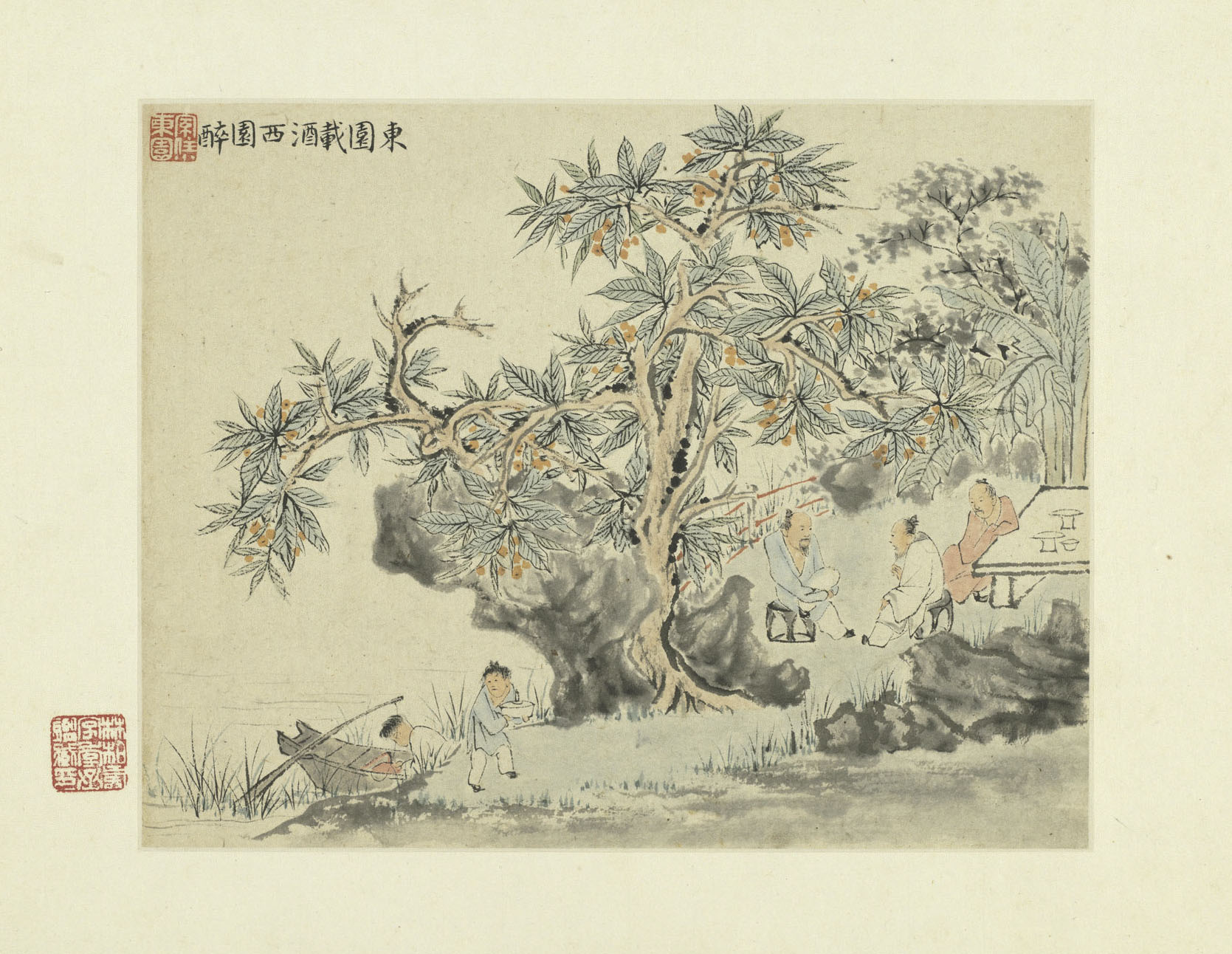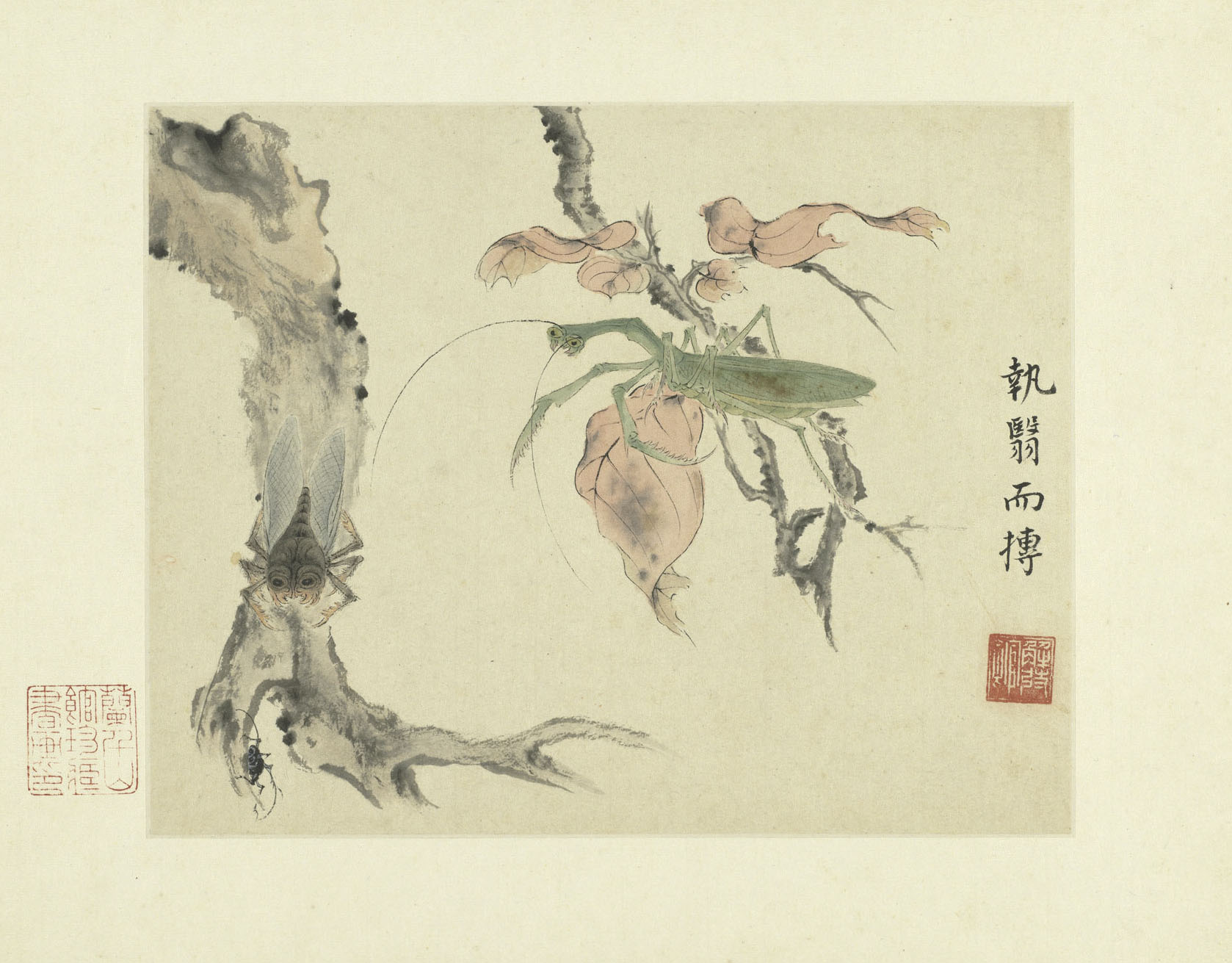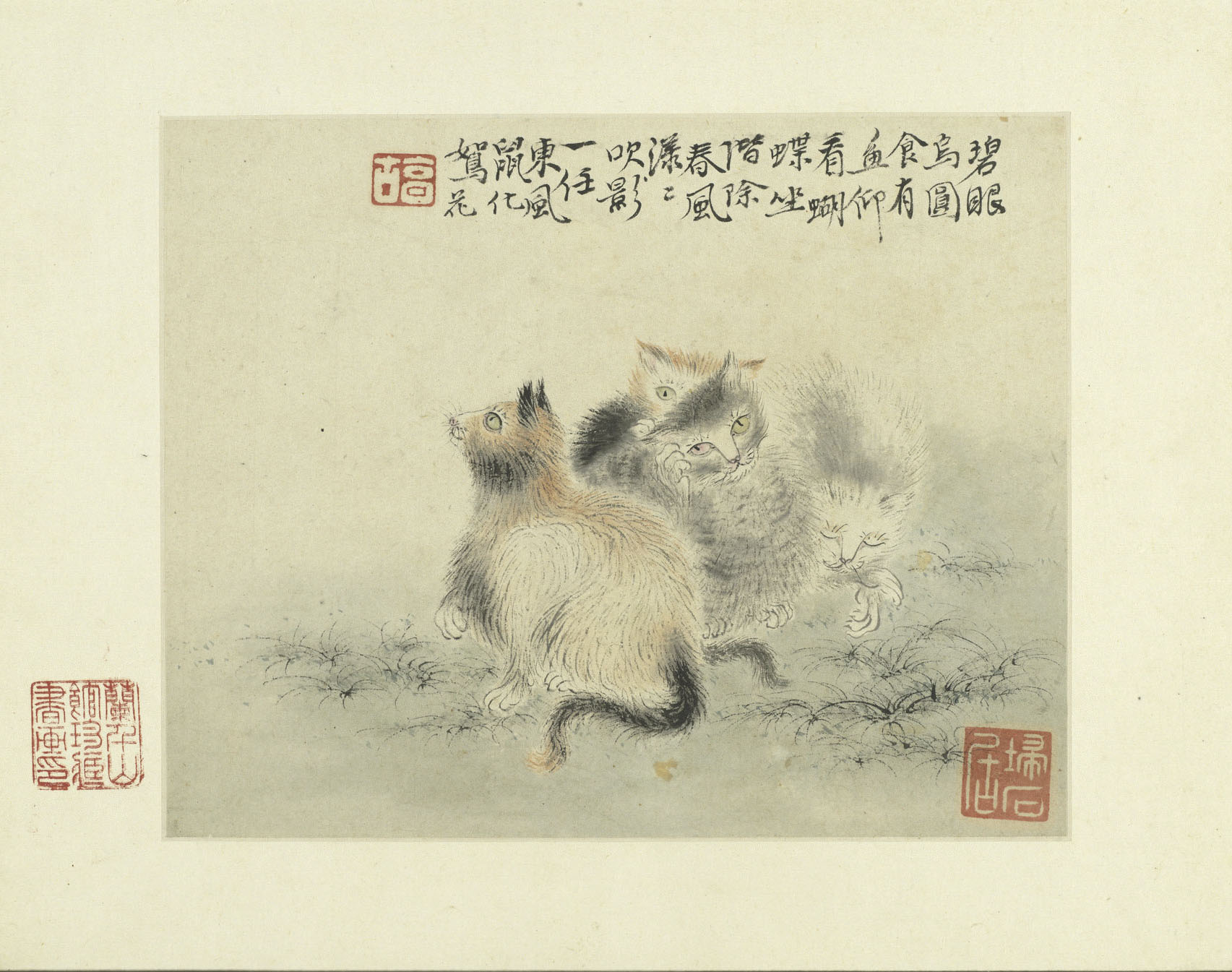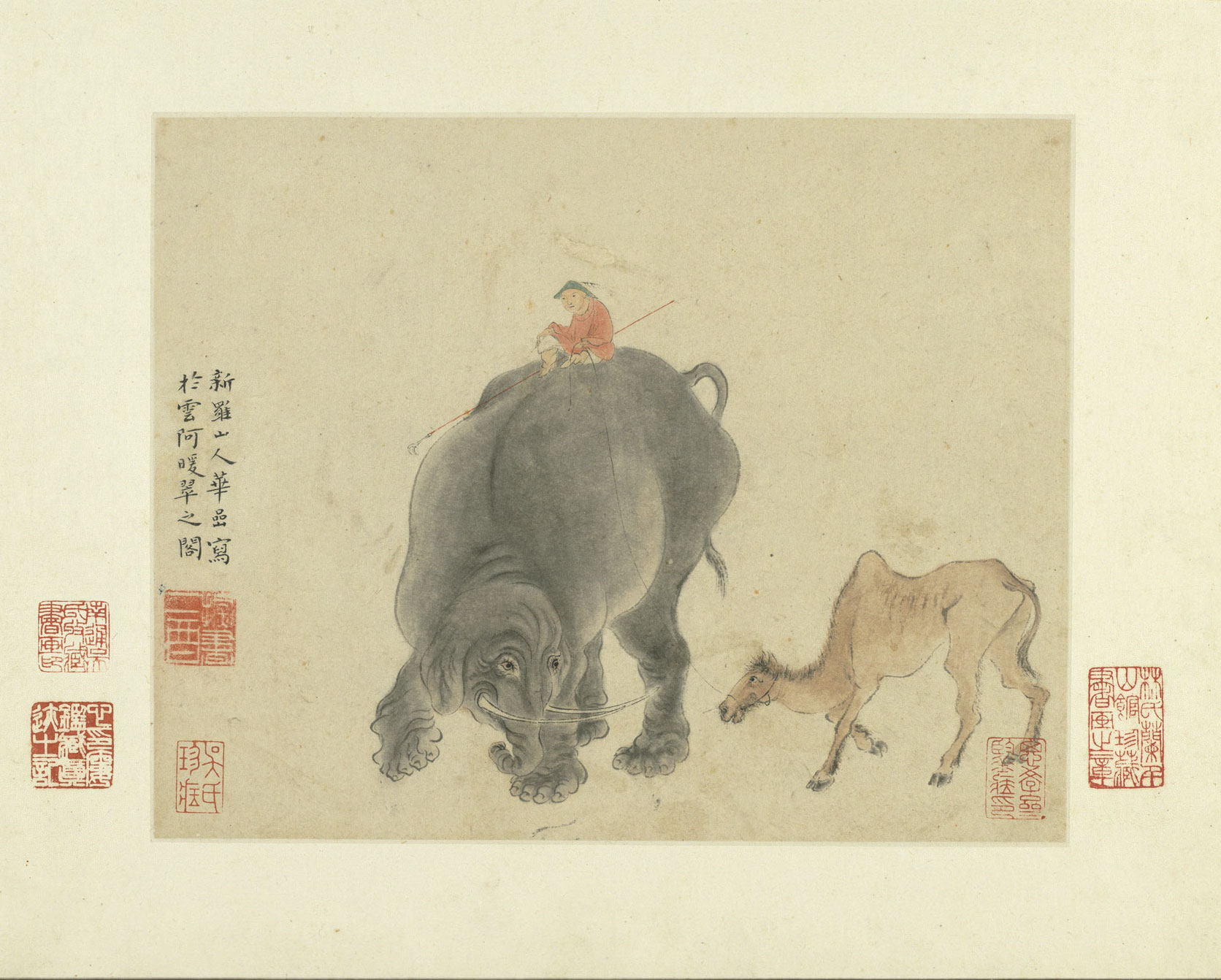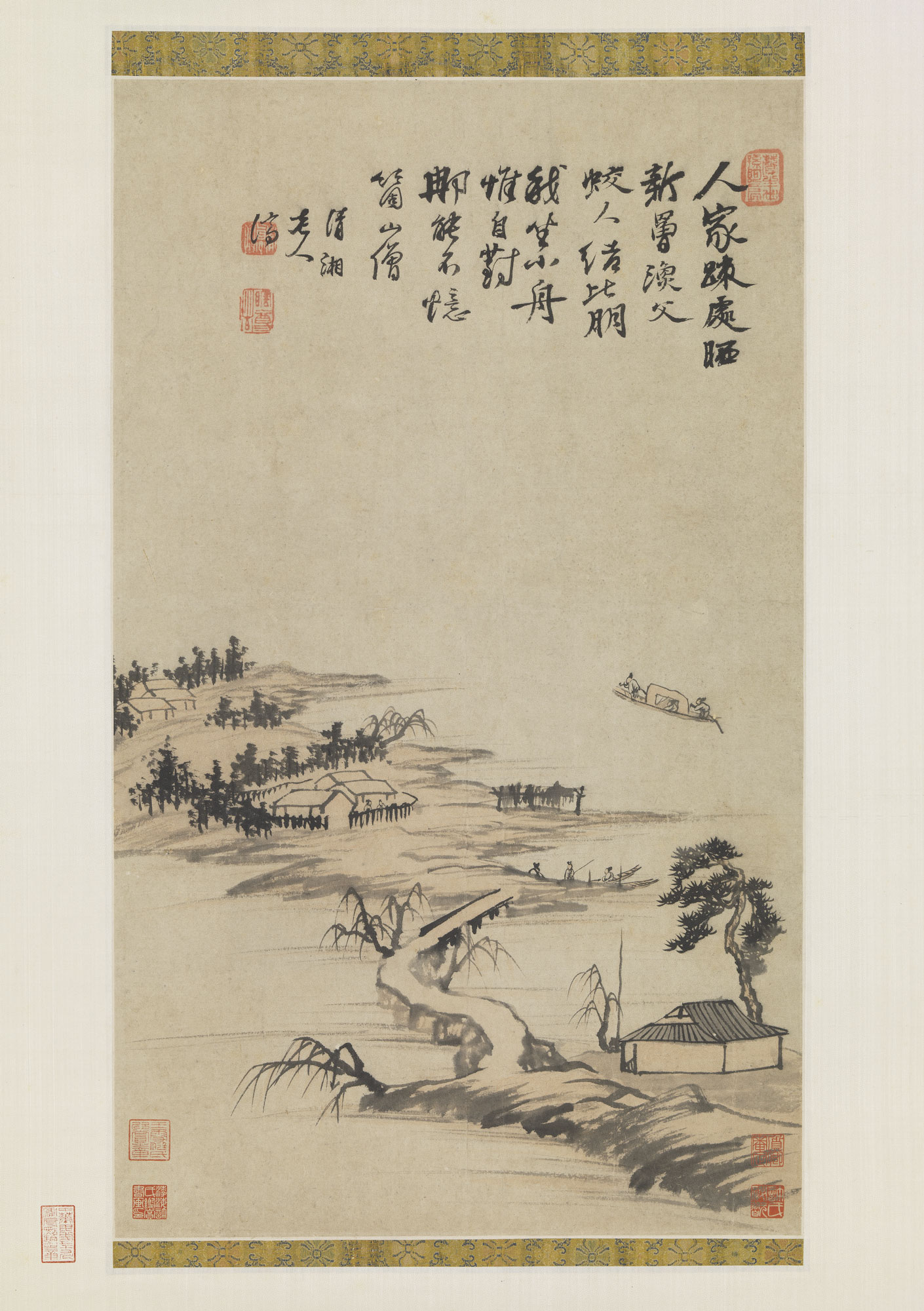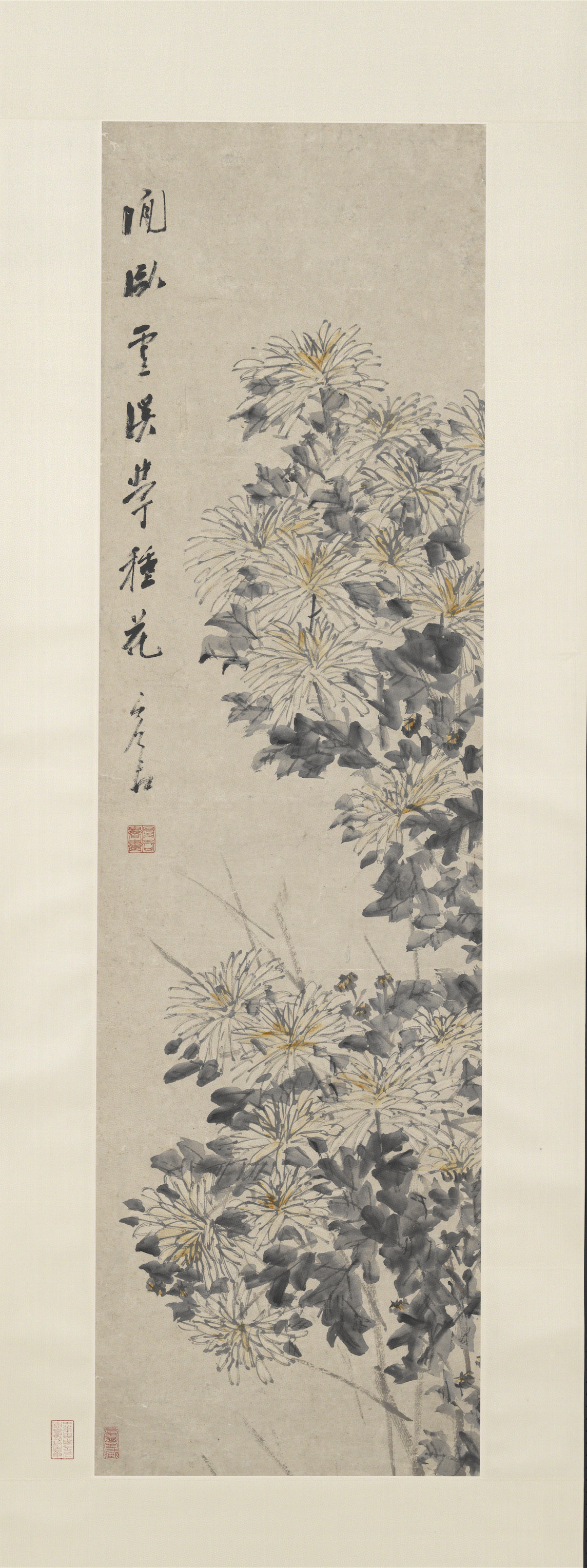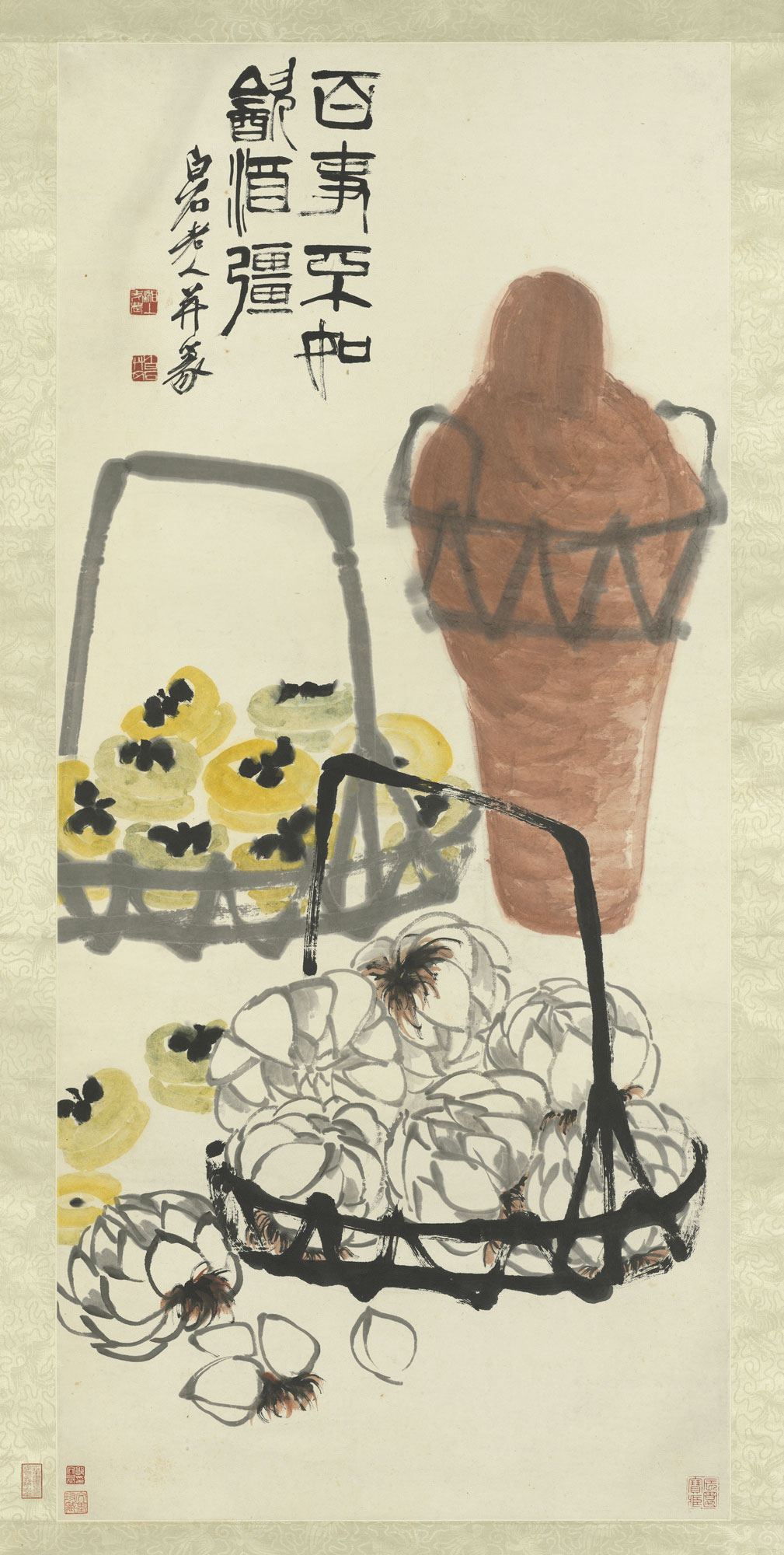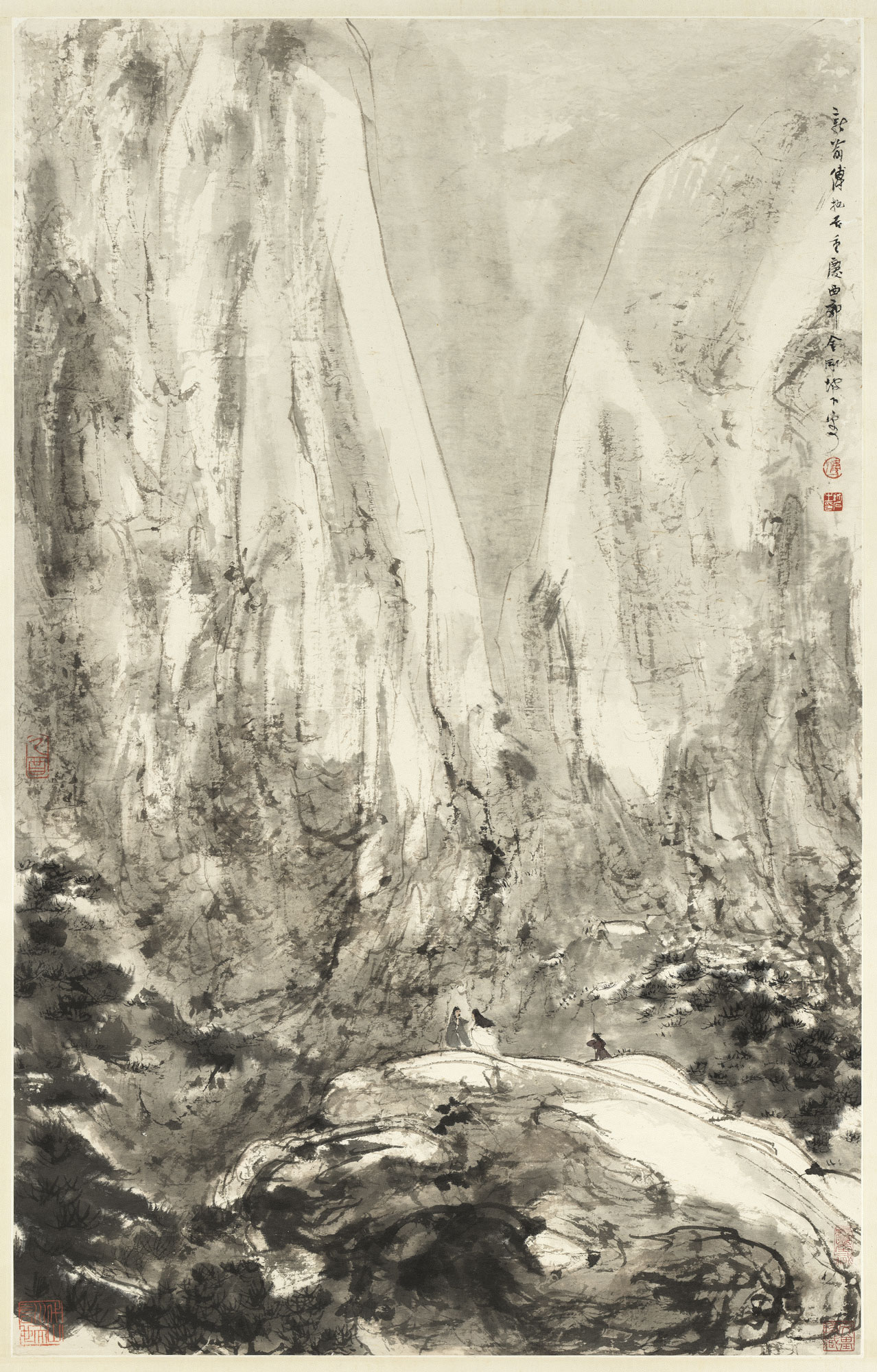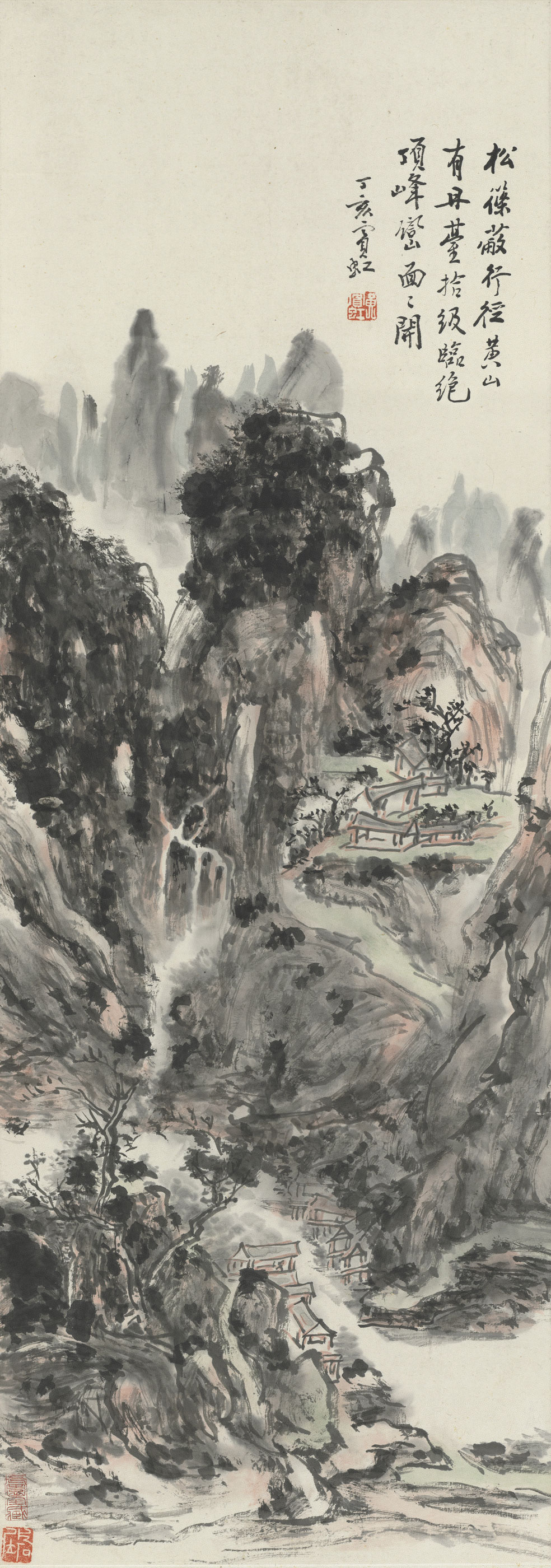Selections
-
Album of Sketches from Life (I)
- Hua Yan (1682-1756), Qing dynasty
Hua Yan, style name Qiuyue and sobriquet Xinluo shanren, was influenced by the painting of Yun Shouping (1633-1690), Zhu Da (ca. 1626-1705), Shitao (1642-1707), and Chen Hongshou (1598-1652) early in his career as an artist. Later he developed a new manner of his own and became one of the "Eight Eccentrics of Yangzhou." He painted a wide range of subjects, including figures, birds, grasses-and-insects, various animals, and water creatures. The forms in his works often have a lively and humorous touch with a sense of expression that reveals his feelings. This album, which is not dated but belongs to Hua Yan's late period after the age of sixty, has been entrusted by the Lanqian shanguan collection to the National Palace Museum.
-
Recalling Monk Geshan
- Shitao (1642-1707), Qing dynasty
Shitao originally had the name Zhu Ruoji and later went by the sobriquets Dadizi, Qingxiang laoren, and Kugua heshang. A descendant of the Ming dynasty imperial family, he became a Buddhist monk after the fall of the Ming and traveled to Xuancheng and Huangshan in Anhui before later settling in such places as Jinling (Nanjing) and Yangzhou. He excelled at painting landscape, flower-and-fruit, and orchid-and-bamboo subjects, his brush and ink unconfined by traditional conventions using the innovation of his style and compositions. This painting depicts traveling by boat on the Qing River, along the banks of which are seen fishermen. Although ink is used sparingly, the brushwork is fluid in the simple and direct expression similar to the style of Bada shanren (Zhu Da), a contemporary of Shitao. Mr. Wang Shih-chieh donated this painting to the National Palace Museum.
-
Chrysanthemums
- Xugu (1824-1896), Qing dynasty
Xugu, a native of Shexian in Anhui, originally had the surname Chen but is also recorded has having the last name Zhu and the name Xubai. He excelled at painting landscape, flower, fruit-and-vegetable, and bird-and-insect subject matter. He used dry ink with a slanted brush to create an arid and creative atmosphere for a style of his own. This work depicts clusters of chrysanthemums bunched together. The petals are rendered in outlines using dry ink, while the leaves feature light and dark dotted strokes. The ink harmonizes between dry and moist as well as light and dark to highlight the dry branches and yellow flowers, heightening the visual effect of pure elegance and untrammeled beauty. Mr. Tsai Chen-nan donated this painting to the National Palace Museum.
-
Wine and Persimmons
- Qi Baishi (1864-1957), Republican period
Qi Baishi, a native of Xiangtan in Hunan, originally had the name Chunzhi and later changed it to Huang. He also had the style name Pingsheng and the sobriquet Baishi, by which he is better known. Originally he did decorative woodworking but later studied painting, coming to specialize in landscapes-and-figures as well as flowers-and-insects, his subjects often deriving from everyday life. In the painting here, he has arranged a wine jug depicted in ocher with two baskets placed by it, one featuring yellow persimmons and the other white lily bulbs. The inscription on the work is a play on words for these two that means "nothing is better than a cup of wine." Visually speaking, the arrangement of tall and low as well as slender and wide creates a dramatic contrast. The colors also range between light and dark, skillfully balancing the composition. Mr. Tsai Chen-nan donated this painting to the National Palace Museum.
-
Loquats and Sparrows
- Wang Zhen (1867-1938), Republican period
Wang Zhen (style name Yiting, sobriquet Bailong shanren), a native of Wuxing in Zhejiang, excelled at depicting figures, birds-and-flowers, and animals, being a famous artist of the Shanghai School. He combined the virtues of other such renowned local artists as Ren Bonian (1840-1895) and Wu Changshuo (1844-1927) in his works. This painting depicts luxuriant loquat branches laden with fruit, among which are three sparrows that have been attracted by the ripening fruit. Painted on an autumn day in 1933, the surface appears warm yet raucous and rendered in a sketchy manner, the colors subdued and elegant as ink and colors mix well together. Mr. Chi Hsing-fu and his wife Chang Chen-fang donated this painting to the National Palace Museum.
-
Pomegranates and Daylilies
- Chen Hengke (1876-1923), Republican period
Chen Hengke (style name Shizeng; sobriquets Xiuzhe and Xiu daoren), a native of Yining in Jiangxi (modern Xiushui), was exceptionally talented and precocious as a youth, being able to do suspended-arm calligraphy at the age of ten and known as a child prodigy. He later went to Japan to learn museum studies and took up seal carving as well, his style archaic yet pure and simple. In the painting here are pomegranates and daylilies done with strong and mature brushwork. The lines in the strokes are full and moist, being handled with great naturalness. The method of painting traces back to Chen Chun and Xu Wei of the Ming dynasty, to which Chen Hengke has added the brush manner of his contemporary, Wu Changshuo, thereby infusing his style with both the "sketching ideas" manner of painting and solid brushwork of Bronze and Stele calligraphy. Mr. Lin Tsung-yi donated this painting to the National Palace Museum.
-
Feelings of Snow
- Fu Baoshi (1904-1965), Republican period
Fu Baoshi (original names Changsheng and Ruilin, sobriquet Shizhai zhuren) was a native of Xinyu in Jiangxi. In his early years he studied in Japan and came to excel at painting landscapes and figures combining both Chinese and Western methods, also taking nature as his teacher. In the painting here, he depicted towering peaks in snow as three figures make their way along the snowy ground. The brushwork throughout the work is spirited, integrating wet and dry manners. The rocks and trees in the foreground are done in moist ink washes, creating a dynamic contrast with the white forms of snowy mountains that have been left blank, filling the work with an atmosphere of foreboding cold. Although the brushwork is simple and remote, there is a natural and untrammeled quality to Fu Baoshi's mature style seen here. Mr. Tsai Chen-nan donated this painting to the National Palace Museum.
-
Alchemy Terrace at Huangshan
- Huang Pin-hung (1865-1955), Republican period
Huang Pin-hung (original name Zhi, sobriquet Binhong [Pin-hung]), a native of Shexian in Anhui, inscribed this painting as follows: "In the shade of pine needles I walk along a path, at Huangshan there is the Alchemist's Terrace. Ascending to the top of the peak, hills and peaks open before me. [Painted by] Pin-hung in the 'dinghai' year (1947)." Huangshan, also known as the Yellow Mountains, is renowned for its precipitous peaks, the scenery marvelous and breathtaking. Legend has it that Huangdi (the Yellow Emperor), Rong Chengzi, and Fuqiu Gong prepared elixirs of immortality, leaving behind the Alchemy Terrace(Dantai) there tucked between the layers of ridges for a desolate and deep quality. In the use of brush and ink, Huang Pin-hung pursued a rich and moist manner. Mr. Tsai Chen-nan donated this work to the National Palace Museum.
